876
Meet pirosomami - incredibly strange sea creatures!
Pirosomy, or as they are called pyrosome, is one of the rarest creatures on Earth. Meet them under water is like to meet a live unicorn. And shoot them on camera and was able to do only a few raz.Dazhe in the depths of the ocean, which is literally teeming with different creatures unimaginable, gigantic pirosomy remain one of the most bizarre. Website invites you to get to know them.
Pirosomy look like hollow tubes, closed at one end.
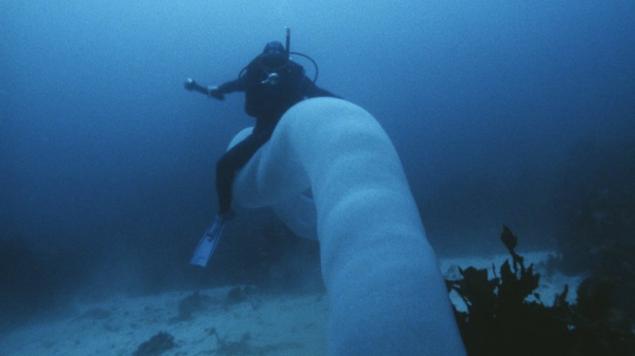
All such long tube - this is one pirosoma. It is composed of a plurality of small organisms that replicate themselves and are woven together to form one larger tube. Such organisms are called zooids.
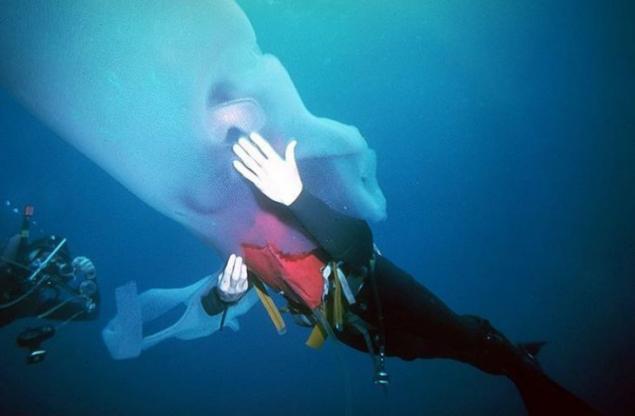
Here's a free-colony of organisms discovered in 2011 off the coast of Tasmania, Michael Baron, a specialist center avtraliyskogo Eaglehawk Dive.
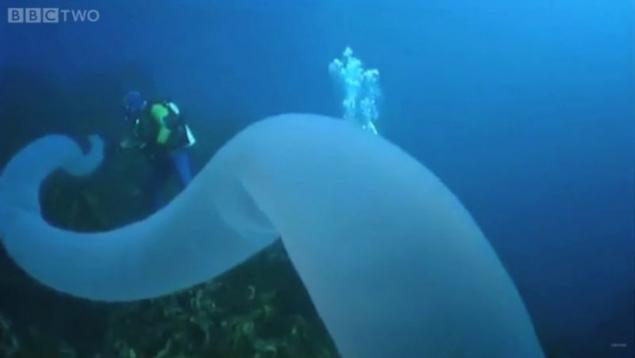
Each "pipe" begins with just one zooid that begins to create its own copies and becoming more and more. Total pirosomy size depends on the type and age of the initial zooid.
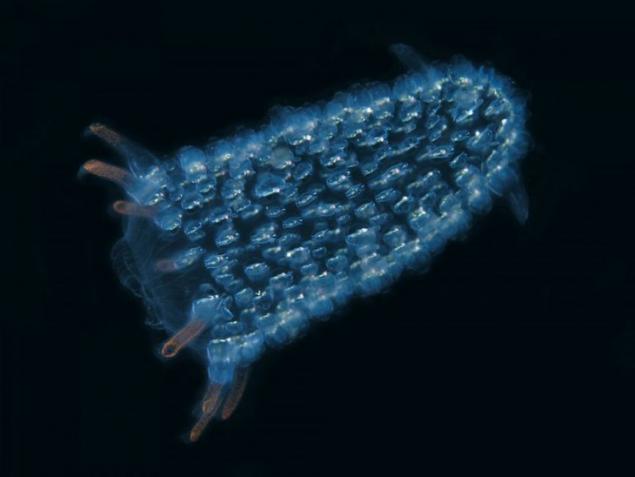
By themselves, these zooids very tiny and covered with a gelatinous sheath.
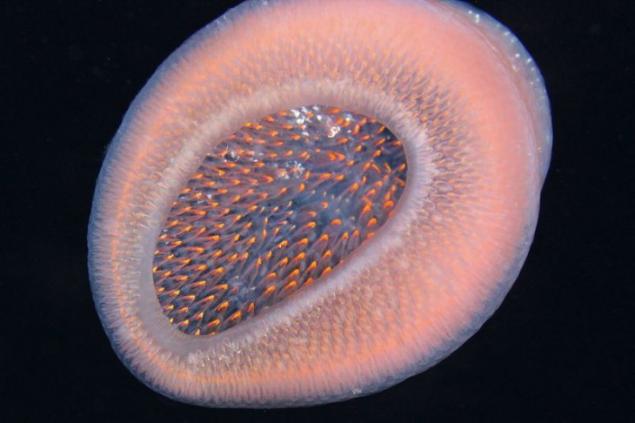
Pirosomy can grow to the size of the whale, but it is a rarity, most of them much less. In some of the largest representatives of the people can fit entirely.
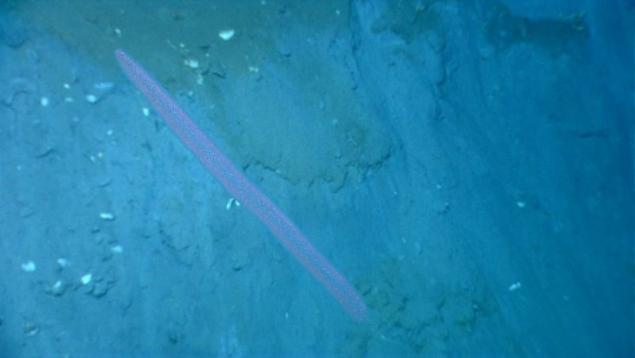
However, Pyros inside the swim is not recommended. Goulett Karen Holmes-Eaglehawk Dive specialist says that one day discovered a dead penguin inside a "pipe". Apparently he was stuck inside pirosomy and drowned.

Sami zooids, parts Piros, feed on plankton by filtering water through their bodies. Recycled water, after filter out plankton, through the inner part of the "pipe" derives from the large opening at one end.
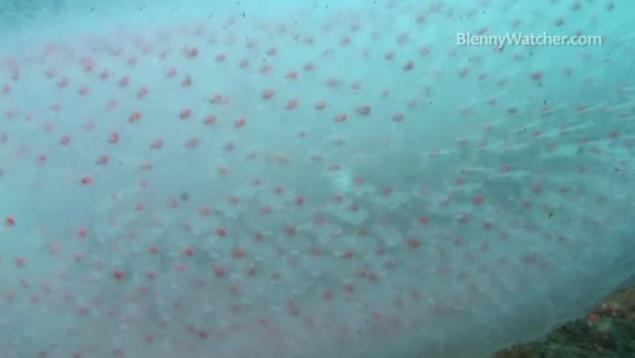
It is this movement of water through the inside of pirosomy creates jets that allow these organisms to move around the ocean. Although largely responsible for their movement ocean currents, however pirosomy still remain the only animals that move in such a way.
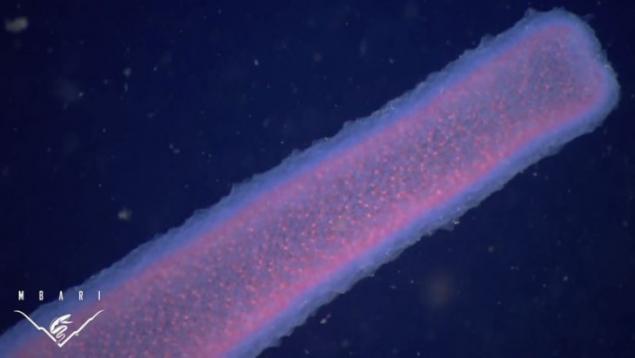
And yet pirosomy - luminescent animals that glow blue-green, white or pink light.

The few divers who managed to touch pirosomam claim that they are as gentle as a feather boa. "When I touched it, the animal did not respond. Touch it reminded soft jelly "- said one of the divers.

But touch them still not worth it, because you can do much harm to the animal.
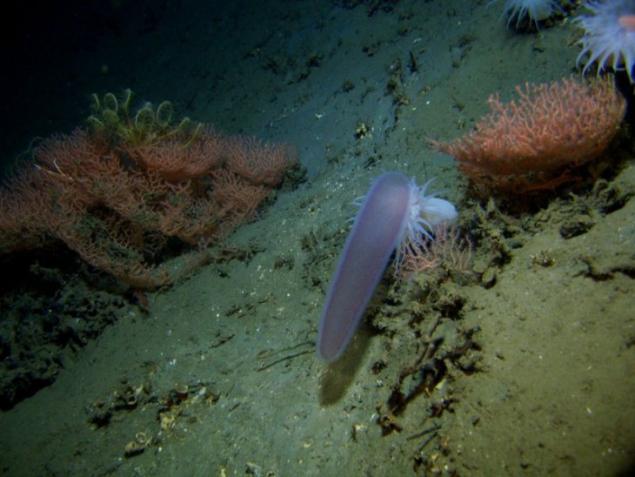
Modern science is very little known about pirosomah as large colonies of us are quite rare.
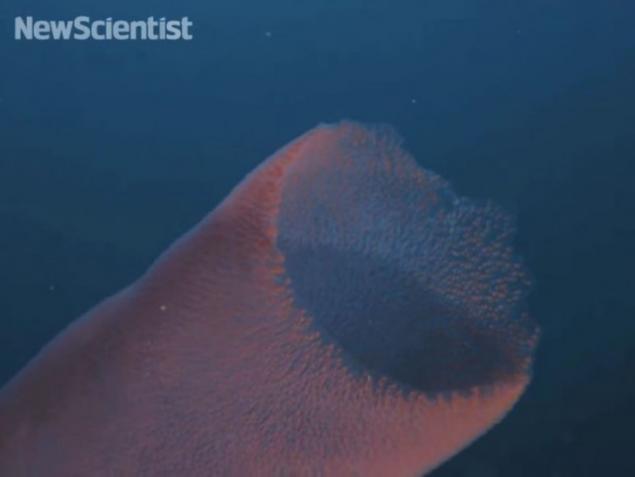
However, some believe that the ocean is really just crawling with these creatures.
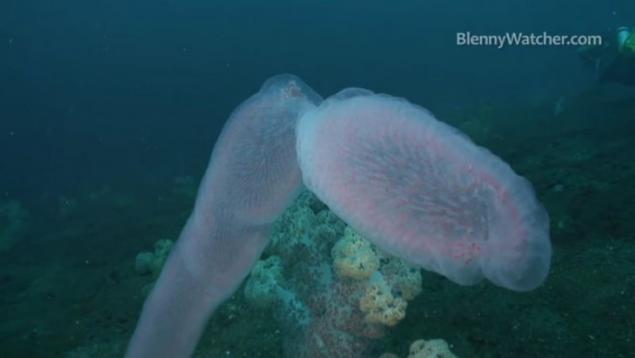
There is a similar marine life - salps. They are also free-swimming, but not lyuministsenty and do not form the pipe and chain.

They move with the help of pumping water through the own body.

via fishki.net/1756736-pirosomy--odni-iz-samyh-strannyh-obitatelej-podvodnogo-mira.html
Pirosomy look like hollow tubes, closed at one end.

All such long tube - this is one pirosoma. It is composed of a plurality of small organisms that replicate themselves and are woven together to form one larger tube. Such organisms are called zooids.

Here's a free-colony of organisms discovered in 2011 off the coast of Tasmania, Michael Baron, a specialist center avtraliyskogo Eaglehawk Dive.

Each "pipe" begins with just one zooid that begins to create its own copies and becoming more and more. Total pirosomy size depends on the type and age of the initial zooid.

By themselves, these zooids very tiny and covered with a gelatinous sheath.

Pirosomy can grow to the size of the whale, but it is a rarity, most of them much less. In some of the largest representatives of the people can fit entirely.

However, Pyros inside the swim is not recommended. Goulett Karen Holmes-Eaglehawk Dive specialist says that one day discovered a dead penguin inside a "pipe". Apparently he was stuck inside pirosomy and drowned.

Sami zooids, parts Piros, feed on plankton by filtering water through their bodies. Recycled water, after filter out plankton, through the inner part of the "pipe" derives from the large opening at one end.

It is this movement of water through the inside of pirosomy creates jets that allow these organisms to move around the ocean. Although largely responsible for their movement ocean currents, however pirosomy still remain the only animals that move in such a way.

And yet pirosomy - luminescent animals that glow blue-green, white or pink light.

The few divers who managed to touch pirosomam claim that they are as gentle as a feather boa. "When I touched it, the animal did not respond. Touch it reminded soft jelly "- said one of the divers.

But touch them still not worth it, because you can do much harm to the animal.

Modern science is very little known about pirosomah as large colonies of us are quite rare.

However, some believe that the ocean is really just crawling with these creatures.

There is a similar marine life - salps. They are also free-swimming, but not lyuministsenty and do not form the pipe and chain.

They move with the help of pumping water through the own body.

via fishki.net/1756736-pirosomy--odni-iz-samyh-strannyh-obitatelej-podvodnogo-mira.html























